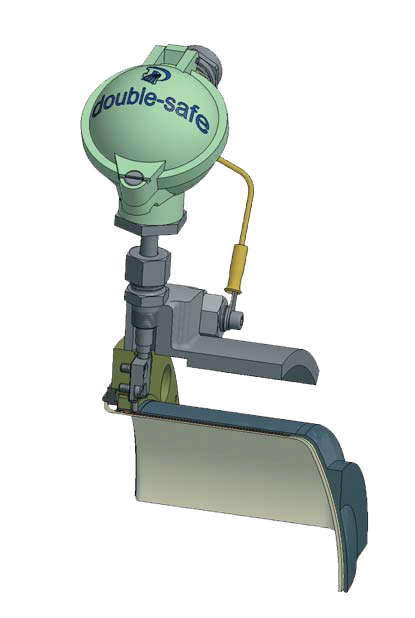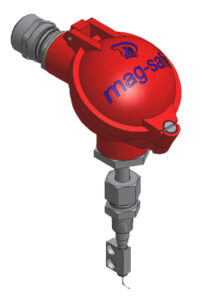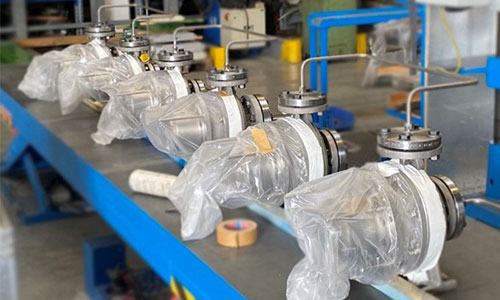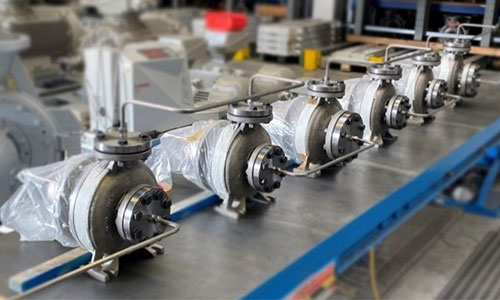Highest Safety for dangerous Fluids
The safety aspect of pumping highly hazardous and toxic fluids is playing an increasingly important role. Additional protection by means of a secondary barrier is therefore essential, so that in the event of any damage to the containment can, leakage of the pumped medium to the atmosphere is prevented. In addition to the already known secondary seals, which together with the bearing bracket of the pump form a second safety barrier, DICKOW Pumpen has succeeded in developing a patented double containment can. With the aforementioned containment can, it is possible for the first time to speak of a “real” second barrier, since both the inner and outer cans are designed for the maximum permissible operating conditions. As soon as one pot is damaged by uncontrolled operating conditions, the second pot takes over the full sealing towards the atmosphere and thus prevents leakage of the pumped medium.

Two measuring circuits in the double containment can
Both the inner and outer cans of the double containment can have identical wall thicknesses and are made of the material 2.4610. An interwoven insulated thermocouple wire monitors the space between the two cans.
A transmitter uses resistance measurement to monitor the conductor loop as well as the insulation of the thermocouple wire and the connecting parts to the surrounding housing parts. This results in two independent measuring circuits which are evaluated individually:
– If the conductor loop is damaged or cut, the electrical resistance increases towards infinity. Exceeding the defined threshold value therefore triggers an alarm in the first measuring circuit.
– Additional monitoring of the insulation resistance ensures that an alarm is also triggered if the disconnected conductor loop is short-circuited via the surrounding components. Falling below the defined threshold therefore triggers an alarm in the second measuring circuit.
Additional safety guarantee with the Mag-Safe from DICKOW Pumpen
Despite the second barrier described, DICKOW recommends the additional use of a Mag-Safe. On the one hand, the Mag-Safe from DICKOW Pumpen monitors any temperature increase that may occur, e.g. due to dry running or solid deposits between the rotor and the containment shroud. On the other hand, it detects a worn roller bearing. The out-of-round driving rotor destroys the connecting wire of the Mag-safe, so that damage to the outer containment can is prevented by a precisely timed alarm or shutdown of the unit.

Further safeguarding by means of helium leakage test
In order to be able to rule out any risk to personnel or contamination of the atmosphere, DICKOW Pumpen also offers its customers a helium leakage test. In order to be able to measure the leakage rate of the double containment can, the area of the pump to be tested is separated from the atmosphere to be tested with a foil. In addition, the pumps are connected in series and then pressurized with 2 bar helium for 30 minutes. Due to its nature, helium is ideally suited as a test medium because, despite its higher electron count, it has a smaller atomic size than hydrogen. In the leakage test, each helium atom would therefore make its way into the atmosphere through any gap, no matter how small.
In a specific application, DICKOW Pumpen successfully managed to guarantee its customer a leakage rate of ≤ 1 x 10-5 mbar*l*s-1. Safety and protection of personnel and the atmosphere are thus guaranteed by means of the double containment can from DICKOW Pumpen.


Source & Pictures: DICKOW

